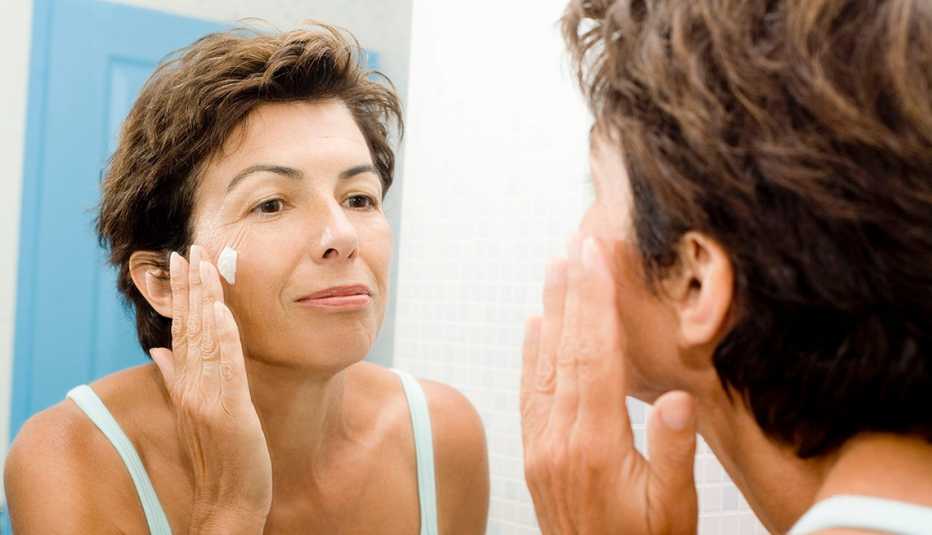AARP Hearing Center
We've redefined skin care. The words “antiaging” and “younger” have been banished to a beauty-marketing black hole. We're no longer suckers for every so-called breakthrough brand, miracle ingredient or 14-step exotic regimen of products. Instead, we just aim to look healthy, well rested and fresh. There is no one-size-fits-all solution for mature skin for two good reasons. First, grownup complexions — like our hair (quality, texture and color) and bodies (shapes, sizes and proportions) — do differ. Second, your complexion's not shy now about revealing the effects of genes and your history of sun damage, smoking, poor diet and lazy skin maintenance. Here are 10 things for all to know, get into and avoid.


1. Using the same moisturizer a.m. and p.m. is OK, but there's a catch
You can't skip sunscreen during the day, even when it's rainy, cloudy or cold. A daily moisturizer with broad spectrum SPF 30-plus will prevent UVA (aging) rays from doing their dirty work year round. Designed to be worn under makeup, they are usually light and nongreasy. While you don’t need sunscreen at night, using that same SPF cream before bed won't hurt, but you'll miss the extra hydration of a separate, richer night cream with skin-repair ingredients. If your face is very dry, using that rich night cream for morning and evening is perfectly fine — just be sure to add sunscreen somehow during daylight hours (see items 2 and 3).
2. Makeup with SPF is not always a substitute for sunscreen
Some tinted moisturizers, CC and BB creams and foundations do come with built-in SPF 30-plus and skin-improving ingredients. If the SPF is lower than 30 and you plan to be outdoors or exposed to the sun for a long period of time (like at a farmers or flea market, a football game, lunch outside at a bistro), apply a light sunscreen over it. That goes for driving for hours, too, since UVA rays penetrate glass. We don't apply makeup with the same thoroughness as moisturizer or sunscreen — we blend it out. Remember if your ears, neck and hands are exposed, they don't get makeup but do need sunscreen.
3. Sandwich sunscreen after all skin care and before makeup
If you're using a moisturizer-sunscreen hybrid, see item 1. If your day moisturizer does not have a sunscreen, apply one after serum, eye cream and moisturizer but before primer (if you use one), foundation and the rest of your makeup. FYI: A physical sunscreen with zinc or titanium oxide (aka mineral or natural sunscreen) blocks UVA/UVB rays and deflects them; a chemical sunscreen (with ingredients like oxybenzone, octinoxate, octisalate and avobenzone) absorbs rays like a sponge. Which one to use requires some experimentation on your part. Choose a sunscreen that feels compatible with your other face products, is undetectable on your skin (regardless of skin tone), and doesn't cause makeup to separate, streak or slide off.






























































More From AARP
11 Styles of Tops You Need to Own Now
Looking good from the waist up has never been more fashionable10 Secrets to Clothes That Fit
Look your best at any size or shape